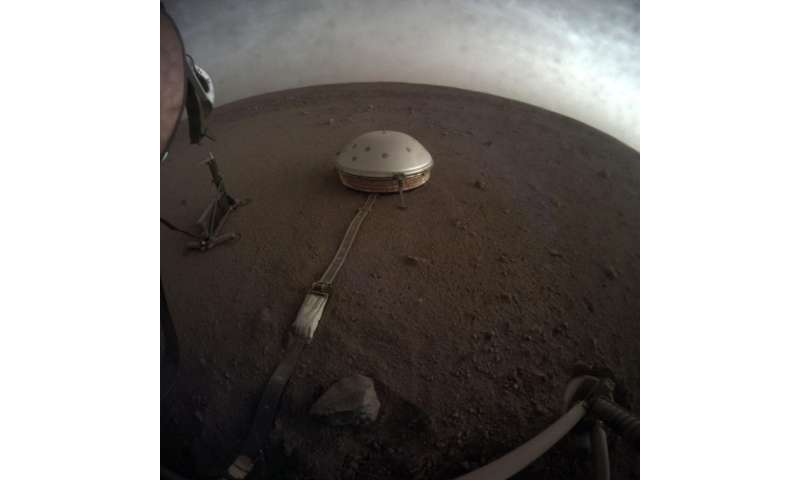While there's more science to come from InSight, here are three findings about our red neighbor in the sky.
Faint Rumblings Are the Norm
InSight's seismometer, which was provided by the French space agency, Centre National d'Études Spatiales (CNES), is sensitive enough to detect slight rumblings from great distances. But it wasn't until April 2019 that seismologists with the Marsquake Service, coordinated by ETH Zurich, detected their first marsquake. Since then, Mars has more than made up for lost time by shaking frequently, albeit gently, with no quakes larger than magnitude 3.7.
The lack of quakes larger than magnitude 4 poses something of a mystery, considering how frequently the Red Planet shakes due to smaller quakes.
"It's a little surprising we haven't seen a bigger event," said seismologist Mark Panning of NASA's Jet Propulsion Laboratory in Southern California, which leads the InSight mission. "That may be telling us something about Mars, or it may be telling us something about luck."
Put another way: It could be that Mars is just more static than anticipated—or that InSight landed in an especially quiet period.
Seismologists will have to keep waiting patiently for those larger quakes in order to study layers deep below the crust. "Sometimes you get big flashes of amazing information, but most of the time you're teasing out what nature has to tell you," said InSight Principal Investigator Bruce Banerdt of JPL. "It's more like trying to follow a trail of tricky clues than having the answers presented to us in a nicely wrapped-up package."
The Wind May Hide Quakes
Once InSight started detecting quakes, they became so regular that, at one point, they were happening every day. Then, in late June of this year, the detections essentially stopped. Only five quakes have been detected since then, all of them since September.
Scientists believe Mars' wind is responsible for these seismically blank periods: The planet entered the windiest season of the Martian year around June. The mission knew that winds could affect InSight's sensitive seismometer, which is equipped with a domed wind and heat shield. But the wind still shakes the ground itself and creates literal noise that covers up quakes. This could also have contributed to what seems like the long seismic silence before InSight's first quake, since the spacecraft landed while a regional dust storm was settling down.
"Before landing, we had to guess at how the wind would affect surface vibrations," Banerdt said. "Since we're working with events that are much smaller than what we'd pay attention to on Earth, we find that we have to pay much closer attention to the wind."
Surface Waves Are Missing
All quakes have two sets of body waves, which are waves that travel through the planet's interior: primary waves (P-waves) and secondary waves (S-waves). They also ripple along the top of the crust as part of a third category, called surface waves.
On Earth, seismologists use surface waves to learn more about the planet's internal structure. Before getting to Mars, InSight's seismologists expected these waves to offer glimpses as deep as 250 miles (about 400 kilometers) below the surface, into a sub-crustal layer called the mantle. But Mars continues to offer mysteries: Despite hundreds of quakes, none has included surface waves.
"It's not totally unheard of to have quakes without surface waves, but it has been a surprise," Panning said. "For instance, you can't see surface waves on the Moon. But that's because the Moon has far more scattering than Mars."
The dry lunar crust is more fractured than Earth and Mars, causing seismic waves to bounce around in a more diffuse pattern that can last for over an hour. The lack of surface waves on Mars may be linked to extensive fracturing in the top 6 miles (10 kilometers) below InSight. It could also mean that the quakes InSight detected are coming from deep within the planet, since those wouldn't produce strong surface waves.
Of course, untangling such mysteries is what science is all about, and there's more to come with InSight.



